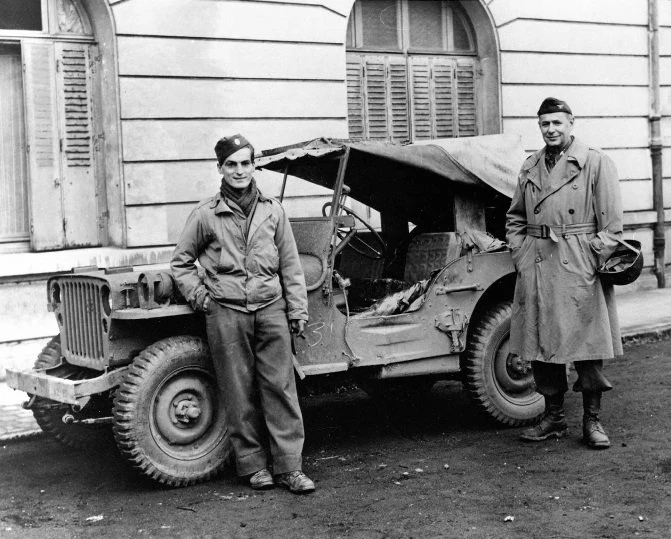Winning a war is not only about killing—it’s also about saving lives, especially if those lives are wounded soldiers fighting on your side.
It’s safe to say that no McLean County resident saved more lives in World War II—or any other war, for that matter—than Dr. Edward Delos (“E.D.”) Churchill. Born and raised in the small northern McLean County community of Chenoa, Churchill played an instrumental role in improving medical care for U.S. and Allied troops—especially in the area of wound management and whole blood transfusions.
Before and after the war, Churchill—with his deep professional ties to Harvard Medical School and Massachusetts General Hospital—garnered laurels for achieving a series of medical advances.
His accomplishments included groundbreaking thoracic surgery relating to the lung, and the use of lobectomies (the removal of part—or all—of an organ) in the treatment of lung cancer and tuberculosis. And he performed the first operation in the U.S. for relief of constricting pericarditis (whereby the membrane sack around the heart interferes with blood flow.)
Churchill credited his Central Illinois upbringing for shaping his character and instilling positive traits such as self-confidence and steadfastness. “Because it was of this stuff we were all made,” he said. “Fortunate breaks in opportunity did the rest.”
Born Christmas Day 1895, he was the third and youngest child of Ebenezer Delos (who also went by E.D.) and Maria Farnsworth Churchill. The family was in the grain business, operating elevators in Chenoa and outlying communities and railroad sidings
Although Dr. Churchill went on to achieve fame in the rarefied air of the Boston-Cambridge medical establishment, he was just another kid when growing up in Chenoa. “Other of his friends remember that he was usually one of the gang when they raided apple trees and grape vines,” reported The Pantagraph in a 1955 feature titled “That Freshman of Yesteryear.” His staunch Presbyterian parents “would probably have been appalled had they known this,” it was further observed. “But who knows? Experiences with green apples and grapes might have started his medical career.”
A sixteen-year-old “Pete” Churchill (as he was known) graduated from Chenoa High in 1912—“not a valedictorian,” it was said, “but ranking high in his class.” At the graduation exercises, he wore knee-length trousers, while the other, older boys sported long pants. “A few classmates remember him as being rather small in stature and spritely. Another remembered him as mischievous.”
From Chenoa Churchill headed to Northwestern University, earning a BS in 1916 and an MS the following year. After that it was a medical degree at Harvard, graduating cum laude in 1920.
In 1943, with war raging across the globe, Churchill left the comforts of his Harvard professorship and the privileges of his Massachusetts General practice for the North African and later Mediterranean theaters of war, serving as a surgical consultant with the rank of lieutenant colonel.
During his time in uniform, he was a major figure in the medical and bureaucratic struggle to increase the use of whole blood on the front lines. Plasma could be transported much more easily than whole blood, but while it increased blood pressure, it lacked the oxygenating properties of red blood cells, As such, plasma was a stopgap measure at best.
Whole blood transfusions saved more lives, but demanded a complex system entailing the collection, transportation, and storage of refrigerated blood. Churchill and others led the charge to force recalcitrant army and navy brass to undertake the changeover—despite the daunting logistical challenges.
On Aug. 27, 1943, The New York Times ran an article headlined “Live-Blood Banks Save Soldiers’ Lives in Sicily When Plasma Proves Inadequate.” Datelined Allied Headquarters in North Africa, the article reported on the program’s unqualified success in the recently concluded Tunisian campaign.
As such, Churchill hoped the article would convince others—from political leaders to regular folk—of the need to expand the use of whole blood in surgical units and military hospitals. “There is need for whole blood transfusions in the treatment of a significant proportion of wounded,” The Times quoted Churchill. “Plasma is not an adequate substitute in these cases.”
Donors were sought among “noncombatant troops, convalescent and mildly wounded patients and solders from medical detachments.” The article also noted that the British had used volunteer POWs, paying them $10 for each donation.
The successful use of whole blood in North Africa led to its expansion during the Allied slog up the craggy Italian Peninsula (known as the “Forgotten War.”).
“We got the blood from the troops in the rear areas,” Churchill recalled after returning stateside in January 1945, adding that “in two or three months after we started at the beginning of 1944 we had delivered nine tons of whole blood for use in the Italian campaign.”
Interviewed by the Boston Globe newspaper, Churchill also touted the pioneering work done in the area of wound management. Successes included the establishment of field hospitals near the front lines to provide “forward surgery” before wounded soldiers were sent further back to undergo additional care. This “two-stage” approach to surgery saved untold lives during the war—and in the countless wars that have followed.
After the war Churchill remained an influential figure in American medicine, serving as chief of surgical services for Massachusetts General until 1962, and holding the John Homans professorship of surgery at Harvard for 31 years.
Edward Delos Churchill passed away in 1972 at the age of 76, near his summer home in Strafford, Vt.
Although Churchill—through his long and productive affiliations with Boston General and Harvard—was the epitome of the East Coast professional elite, he never forgot his Corn Belt roots. “People back home think those who go to other areas of the world and become surrounded by the busy affairs of a different life forget their childhood,” Churchill said in his later years. “But there are no more vivid memories.”

